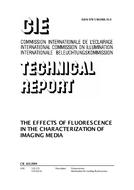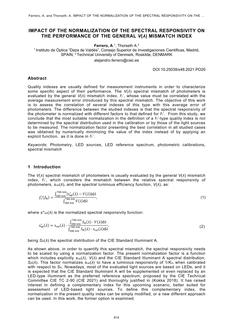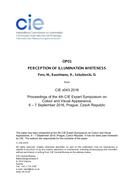Click here to purchase
The objective of the present series of experiments was to estimate discrimination surfaces in 3-D colour space for simulated images of human skin under three illumination conditions – dark, simulated daylight or D65 and cool-white-fluorescent or TL84. Representative patches from two ethnicities – Caucasian and Oriental, were used. Our findings suggest that human observers are better at discriminating small differences in simulated skin under simulated daylight, and that this difference in performance is dominated by the change in thresholds along the luminance direction. The purely chromatic discrimination boundaries (chromatic ellipses) do not change in area between simulated daylight and artificial fluorescent light.
Product Details
- Published:
- 09/01/2016
- Number of Pages:
- 5
- File Size:
- 1 file , 900 KB
- Product Code(s):
- x043-PO10, x043-PO10, x043-PO10


